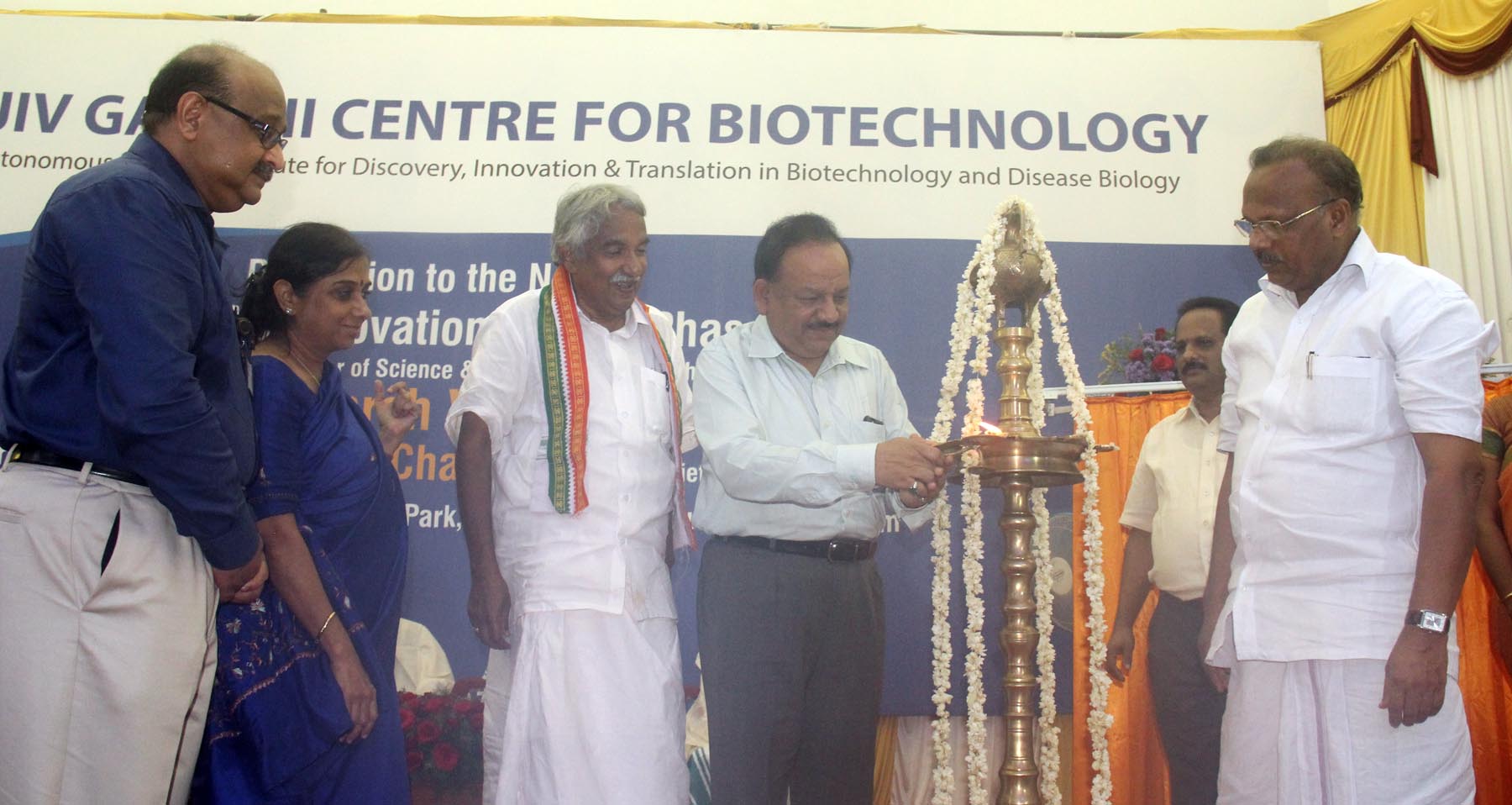
The Union Minister for Science and Technology and Earth Sciences Dr Harsh Vardhan, , has said that the biotechnology sector is growing at an annual rate of 30 percent and India is set to become home to the world’s third largest setup in the sector by 2025.
Inaugurating the first phase of the Bio Innovation Centre of the Rajiv Gandhi Centre for Biotechnology (RGCB) in Tiruvananthapuram today, the Minister said, “I see ten years down the road a $ 100 billion industry which will be the powerhouse of not only India’s pharmaceutical sector, but will be on a global scale. At this rate of growth it looks likely to be bigger than the domestic pharmaceutical industry.”
The Prime Minister is monitoring Biotechnology very actively. Nourishing this sector is crucial to his vision of keeping scientific talent drawn to India. During his visit to the United States in 2014, he had invited the new generation of biotechnology professionals to consider building careers in their country of origin.
“We are talking about building up clusters of growth which would be home to international societies of scientists of all types linked to biotechnology. Backed by the government’s liberal FDI policy (100 percent for Greenfield and Brownfield), this is a winner situation,” Dr Harsh Vardhan said.
The Chief Minister of Kerala, Shri Oommen Chandy, was present on the occasion. Dr Harsh Vardhan praised the government and people of Kerala for leading the movement to spread scientific temper and rationalism on a nationwide scale. He remarked that since the Chief Minister is in charge of the Science and Technology department, and chairs the State Council for Science and Technology, the future augurs well for the state’s R&D institutions.
Dr Harsh Vardhan was all praise for RGCB. “You have set a high standard research and development in selected areas of Biotechnology. The institute has made impressive advances in areas of disease biology and it has a good track record in creating trained competent human resource base in biotechnology.”
The 50,000 sq. feet Innovation Centre, set up with an outlay of Rs 100 crore, would take forward these basic advances forward and create an environment where knowledge generated through fundamental research in disease biology and molecular medicine gets translated to innovative new tools and products.
The Minister said that the Innovation Centre should become a hub for mid and high level innovation founded on advanced level technical platforms and multidisciplinary core that will seed growth and innovation.
Phase 2 of the BIC, which is also under implementation over 20 acres, will include a state of the art research laboratories. It will include an “Advanced Centre for Molecular & Cellular Therapeutics”, a 75 bed hospital jointly run with the Regional Cancer Centre, which will offer cutting edge technologies, therapies and clinical trials for cancer vaccines, immunotherapeutics. There will also be facilities for addition therapies such as stem cell replacements, gene therapy, molecular tumour targeting and imaging.
Dr Harsh Vardhan revealed that private sector investment will be drawn to the project. “RGCB is poised to become a major Biotech growth centre because we are offering investors from the biotech and biopharma sectors state-of-the-art, ‘test and prove’ platforms. They will use these to carry out pre-clinical, analytical, toxicological and biological assays to validate biotech or biological products,” he announced.
Dr Harsh Vardhan called on the Governor of Kerala, Shri Justice (Retd.) P. Sathasivam. The two prospects of Science and Technology research in the state and requested the Governor to take keen interest in the institutions of the state.
The Swadeshi Science Movement, which is part of Vigyan Bharti, in collaboration with the State Council for Science and Technology, organised a meeting in honour of Dr Harsh Vardhan. Scientists, directors and Vice-Chancellors of different institutions and universities connected with science took part in the interaction.
In his address, Dr Harsh Vardhan recalled Kerala’s rich contribution to the growth of R&D institutions in India. He called upon all organisations, whether in the government or private sector, to meet occasionally in order to brainstorm on the prospects for research activity and produce inputs for government policy.
